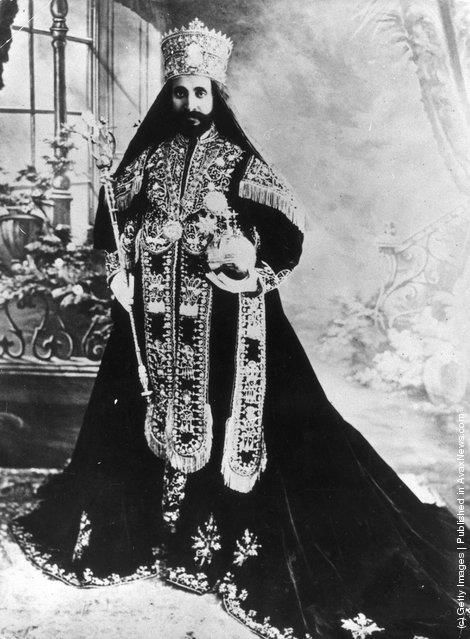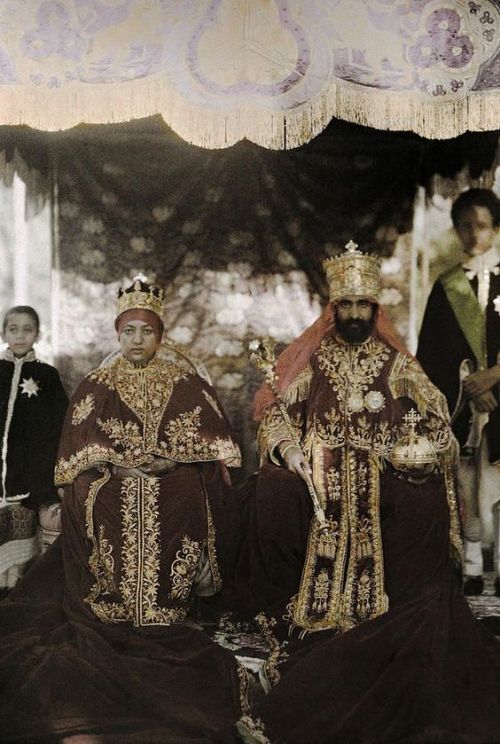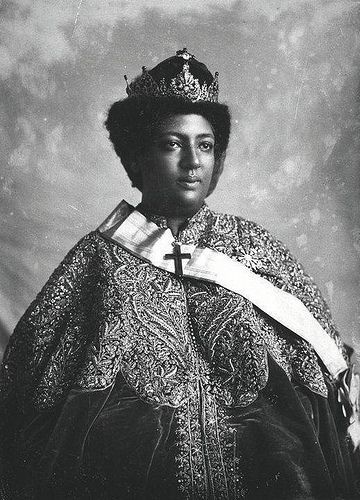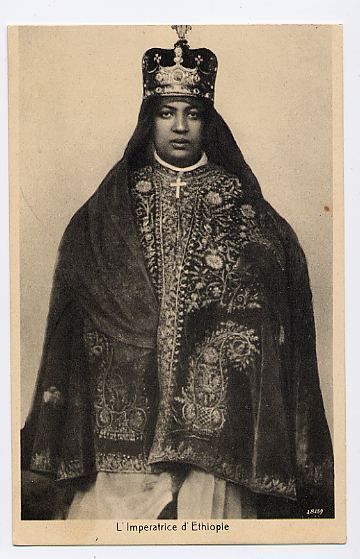Emperor Haile Selassie I of Ethiopia and his wife, Empress Menen Asfaw, Queen of Queens of Judah. He
Emperor Haile Selassie I of Ethiopia and his wife, Empress Menen Asfaw, Queen of Queens of Judah. Her baptismal name was Wolete Giyorgis.Haile Selassie I (Ge'ez: ቀዳማዊ ኃይለ ሥላሴ, qädamawi haylä səllasé, Amharic pronunciation: [ˈhaɪlə sɨlˈlase] ( listen); 23 July 1892 – 27 August 1975), born Ras Tafari Makonnen, was Ethiopia’s regent from 1916 to 1930 and emperor from 1930 to 1974. He is a defining figure in Ethiopian history.He was a member of the Solomonic Dynasty who traced his lineage to Emperor Menelik I via his Shewan Amhara royal ancestors as a great-grandson of king Sahle Selassie.His internationalist views led to Ethiopia becoming a charter member of the United Nations, and his political thought and experience in promoting multilateralism and collective security have proved seminal and enduring.His suppression of rebellions among the landed aristocracy (the mesafint), which consistently opposed his reforms, as well as what some critics perceived to be Ethiopia’s failure to modernize rapidly enough, earned him criticism among some contemporaries and historians. During his rule the Harari people were ethnically cleansed from the Harari Region. His regime was also criticized by human rights groups, such as Human Rights Watch, as autocratic and illiberal.Among the Rastafari movement, whose followers are estimated to number between 700,000 and one million, Haile Selassie is revered as the returned messiah of the Bible, God incarnate. Beginning in Jamaica in the 1930s, the Rastafari movement perceives Haile Selassie as a messianic figure who will lead a future golden age of eternal peace, righteousness, and prosperity. Haile Selassie was an Ethiopian Orthodox Christian throughout his life.The 1973 famine in Ethiopia led to Haile Selassie’s eventual removal from the throne. He died on 27 August 1975 at the age of 83, following a coup d'état. -- source link
Tumblr Blog : sartorialadventure.tumblr.com
#fashion#ethiopia#ethiopian fashion#african royalty#africa#african fashion#subsaharan africa#crowns#royal costume




